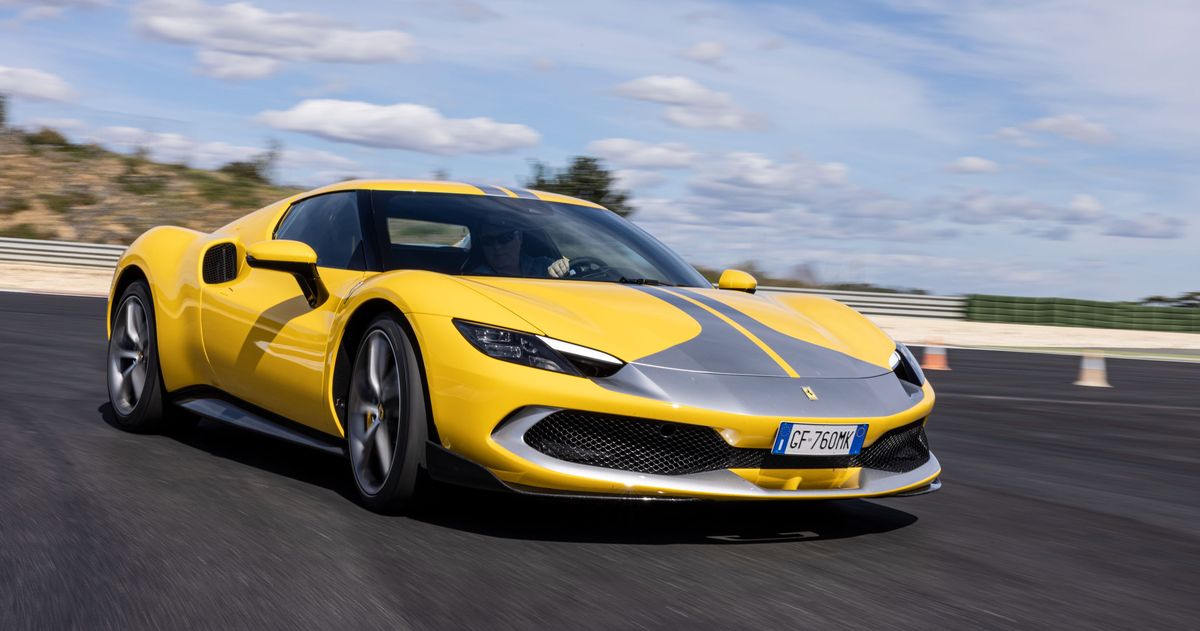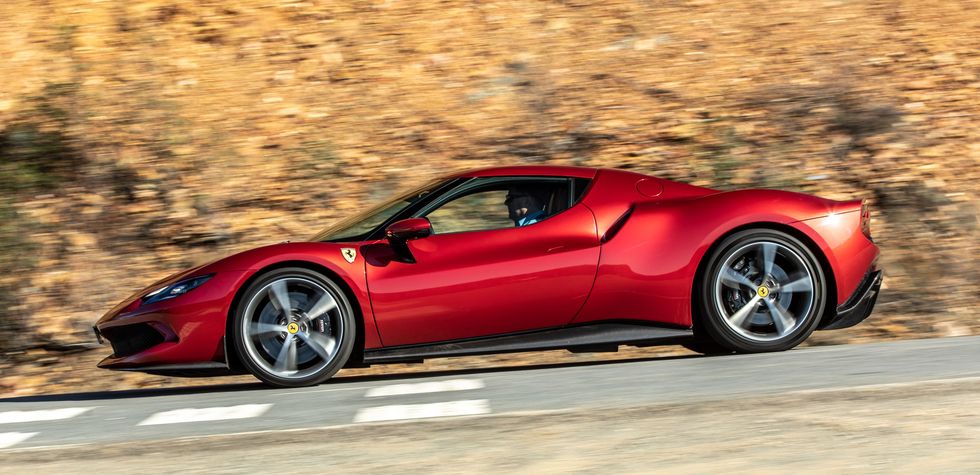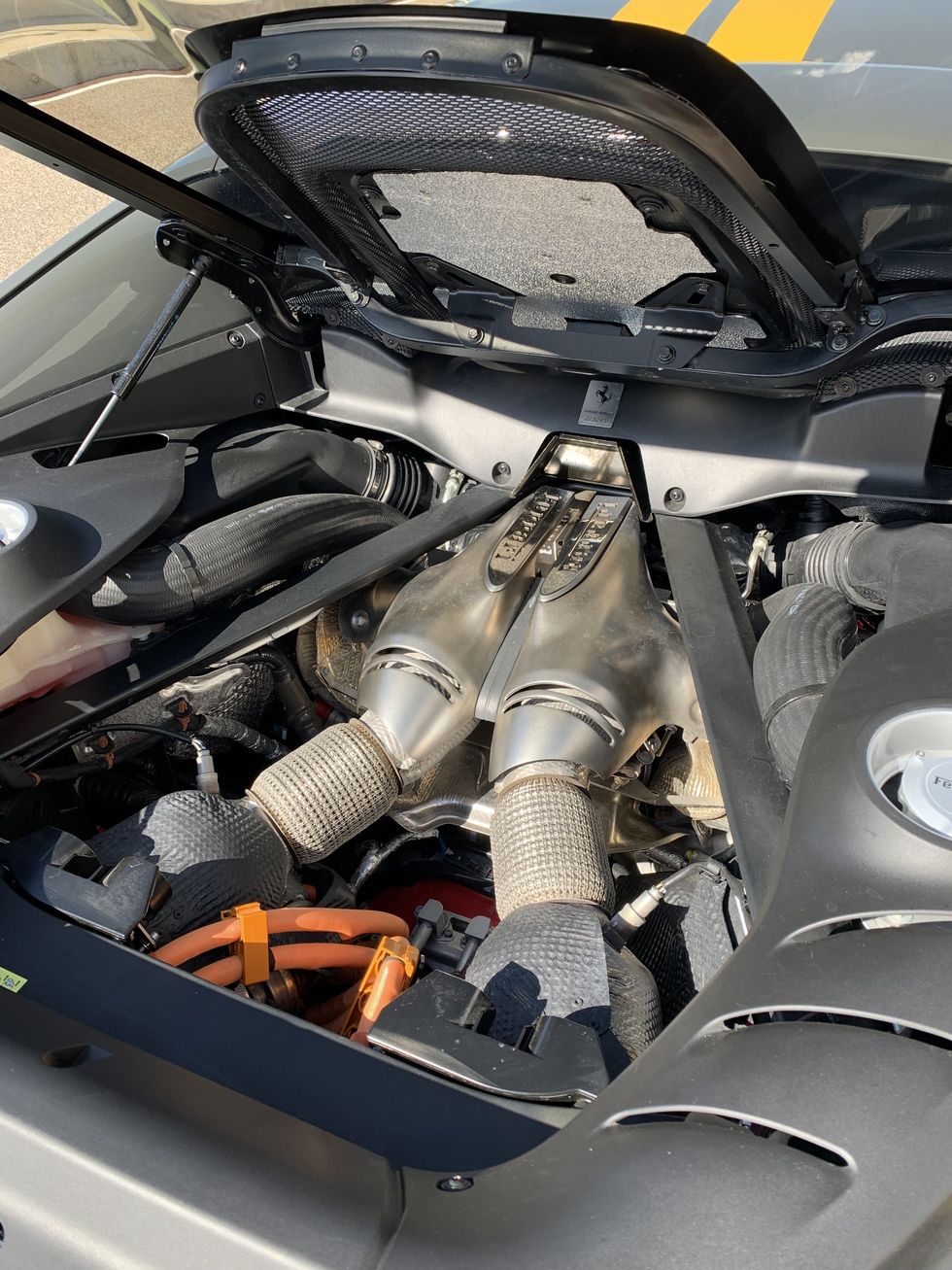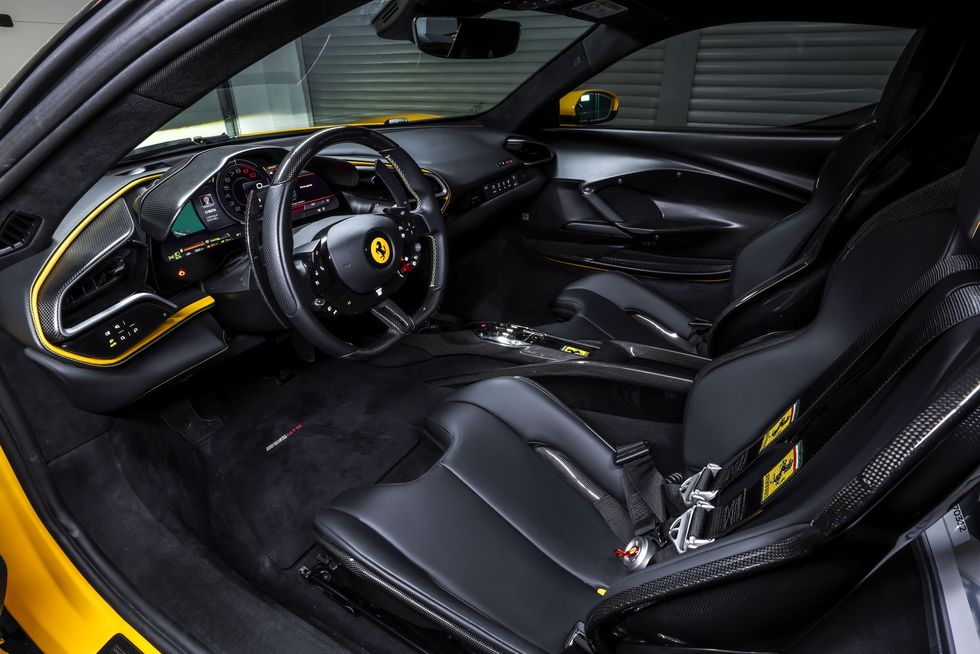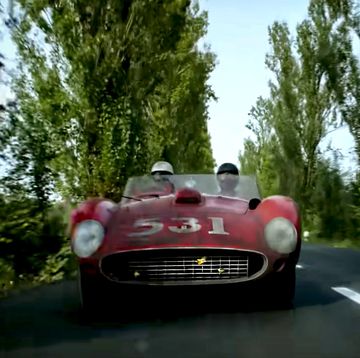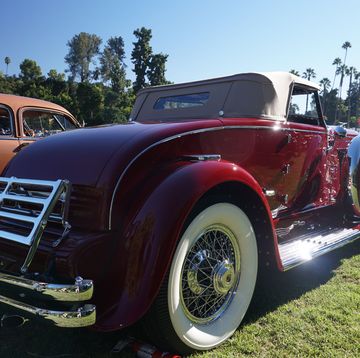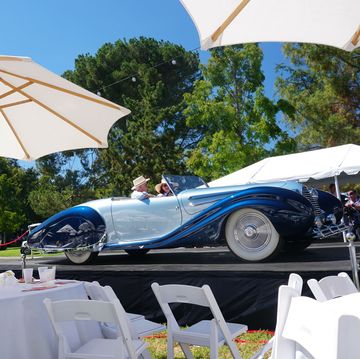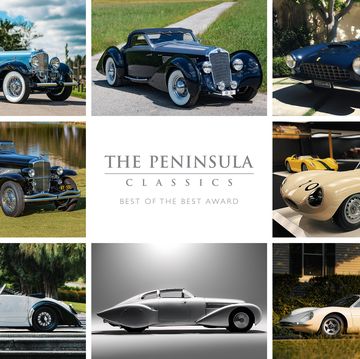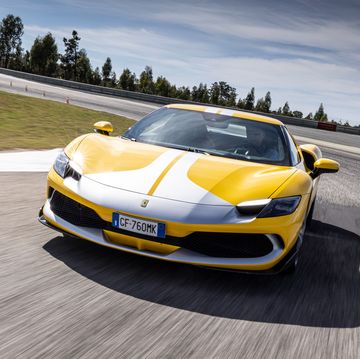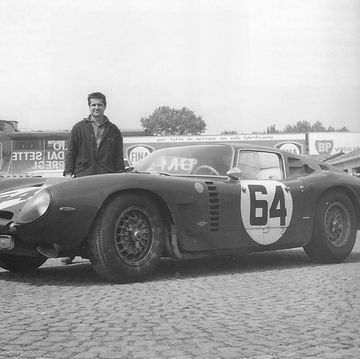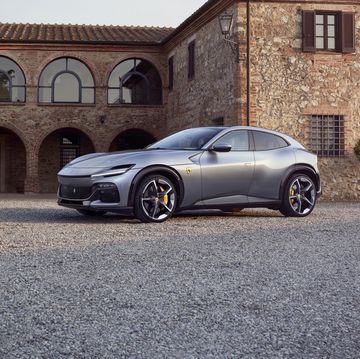- Ferrari’s first V6-powered road car is also one of its first hybrids, marking progress toward the first all-electric prancing horse in 2025.
- The 296 makes an astounding 818 hp when you add the electric motor with the internal-combustion engine.
- Look for deliveries this summer, but you can order one now.
After denying it for years, Ferrari recently said it would produce a pure battery-electric vehicle—and by 2025—joining the rest of the world in proclaiming the electric future of the automobile, even for molto rapido supercars.
Seeing as 2025 is still a ways off, in the interim we have a new hybrid-electric Ferrari, the mighty 296. Time marches on, along with electrical engineering.
You recall, of course, that Ferrari had already made the SF90 as a plug-in hybrid in 2021, and before that it made the magnificent V12-powered La Ferrari supercar in 2015, the latter which benefitted from electricity in the form of the F1-inspired HY-KERS system to help that car deliver 950 peak horsepower.
Now, however, we are gifted the pure road-going enjoyment of the V6 PHEV Ferrari 296 GTB, capable of a combined 818 horsepower. We are on the bridge to the future with the rear tires boiling.
“This is a car that puts a smile on your face,” said Ferrari’s test driver Rafaelle de Simone, in a wonderful example of Italian understatement.
Indeed, if this car is a stepping stone to our inevitable electric future, we should all welcome it. Just because electricity is going to play a part in propulsion doesn’t mean propulsion has to be boring. In the case of the 296, there is an internal-combustion engine (ICE) V6 that makes a perfectly adequate supercar-ish 656 hp all on its own.
But you would have to wind it out to 8000 rpm to achieve that peak output. Or make a larger, heavier V8. So Ferrari engineers devised a 120-degree V6, which lays lower in the engine bay than a traditional 90-degree V8 and allows room for the turbos, too. Yes, the turbos sit on top of the V6 instead of in their “normal” positions down below the banks of the V.
Now, why not go all the way and make a flat-out flat-six, you ask, since Ferrari has made flat 12s before and this would be half as easy as that? The 120-degree angle is almost 180 so it gives a nearly flat profile, while the 120-degree cylinder banks, combined with a firing order of 1-6-3-4-2-5, makes for a really nice V12 sound, Ferrari said. Granted, it gets help delivering that sound to your ears by routing the sound directly from both the exhaust and the intakes into the cabin.
Even with twin-turbos spinning as high as 180,000 rpm, and direct injection of gas into each cylinder, you have a relatively high peak power from the gas engine. Then Ferrari added a 165-hp electric motor between the engine and transmission—a motor that is, by necessity, made in a shape not unlike a pancake.
“It’s Italian, say pizza,” one of the engineers said.
Okay, Pizza. The 296 is powered by an electric pizza.
The pizza is fed electricity from a 7.45-kWh battery that is good for 15.5 miles of pure-electric driving. Given that you can plug it in at home to charge it up, you could theoretically accomplish much of your non-twisty road daily driving on electric power alone.
As you may already know, an electric motor produces 100% of its torque as soon as it starts spinning, so right off the line you are boosted by all the output of the electric motor, along with whatever the ICE is making at those rpms, so any potential lag or holes in the acceleration curve are covered, resulting in a smooth progression of power and torque up to the top of the tach.
The result is pure, streaming oomph, accompanied by a roaring engine note not unlike a V12. Really—give it a listen when you go for a test drive at your Ferrari dealer.
All that power goes to the rear wheels via an eight-speed F1 DCT, as Ferrari calls it, with automatic and manual shifting modes. Then, all you have to do is pick which driving mode you want: eDrive for electric, Hybrid, Performance, or Qualifying. It’s only in Qualifying that you get all 818 hp, by the way. Step it down to Performance mode and you lose about 40 cavallinos, but the engine starts charging the battery when it can. Go all the way down to eDrive and you’re at the 165 hp of the electric motor. Hybrid sways in between them all.
You adjust the modes via the manettino dial on the right of the steering wheel, and the power modes via a touchpad on the left. Among the electronic controls thus adjusted is eSSC, electronic side slip control, which lets you slide around without intrusive controls kicking in. That and a long list of acronym-heavy electronic performance aids keep you on the road and out of the weeds while still allowing fun. It encourages you instead of admonishing you.
The result? Molto bene. As soon as you get in the car—granted not as easy as getting in almost any “normal” car—you realize this is something special. Mine had carbon-fiber seats with thin layers of leather-swathed padding slathered over them. Simple adjustments put the seat about where you want it.
The instrument panel is all right there in front of you, viewable through the steering wheel. The interface is very close, if not exactly the same, as the one in the SF90. You can change the display around as necessary to show navigation or speedo, tach, gauges, or a mix of all the above.
As soon as I drove through the parking lot I could feel this was something special. Only a few months ago I was raving about the SF90 and how it managed the best and most perfect balance between handling and comfort, how it could match driving desire to tracking performance without ever extracting a price for it in comfort.
Well, the 296 is better than that, the best road-going sports or supercar out there. In the hands of test-driver Simone, it’s faster around Ferrari’s storied test track at Fiorano than any rear-drive V8-powered Berlinetta, Ferrari says. The SF90 is quicker but only because it has all-wheel drive, a big asset on that tight and twisting test track. The 296 returns a lap time of 1:21. Try and match that on your gaming console.
You can thank a number of features for this. The electric steering is direct while still managing to filter unwanted feedback. The power seems to be right there whenever you need it. It’s an incredible feeling.
The 296 drives like a larger, faster, louder, and more comfortable Lotus Elise, which doesn’t make a whole lot of sense in one way. The feel through the wheel and through the seat of the pantalones is closest to a McLaren, but with more civility.
On track the 296 steps up without stepping out of line. You can go as fast as you want, it seems, and the car keeps you safely in line without making you think it’s interfering. Even with most of the stability and powertrain controls switched on it’s not intrusive.
Hammering laps as fast as I could at a track in central Spain called Monte Blanco, I felt confident right out of pit lane. It will sprint to 60 mph in less than 2.9 seconds, to 124 mph in 7.3 seconds, and to a top speed of 205 mph.
The howling V12-ish wail is as satisfying to the ears as the push of acceleration sending you back into that carbon-fiber bucket. Ease onto the brakes and the new ABS EVO function helps keep it in line as you decelerate into corners. My 296 came with the Assetto Fiorano package that includes Multimatic shocks and carbon fiber throughout to lighten the car and, with the front splitter, increase downforce by 22 pounds.
Transitioning from one corner to the next does not upset the chassis, as you can accelerate as smoothly as you please while swapping the steering inputs from side to side on the track as necessary. The Michelin Pilot Sport 4S tires that we had on the street, and the even grippier though shorter-living Pilot Sport Cup 2Rs we had on the track never faltered. (The Michelin guy said to expect about a day’s track use out of the 2Rs, by the way.)
The 296 may be one of the greatest thrill rides available on four wheels, though you’ll have to try out your choice of McLaren or F8 Tributo, SF90 or… maybe that’s all in this class as direct competitors.
Some will howl about the $323,000 price tag, others about the missing two cylinders in this V6 hybrid, but you don’t have to listen to them. Listen instead to the howl of the V6 that thinks it’s a V12. It’s a lovely sound. And welcome the electrification to come.
Share your thoughts on the Ferrari 296 GTB in the comments below.

